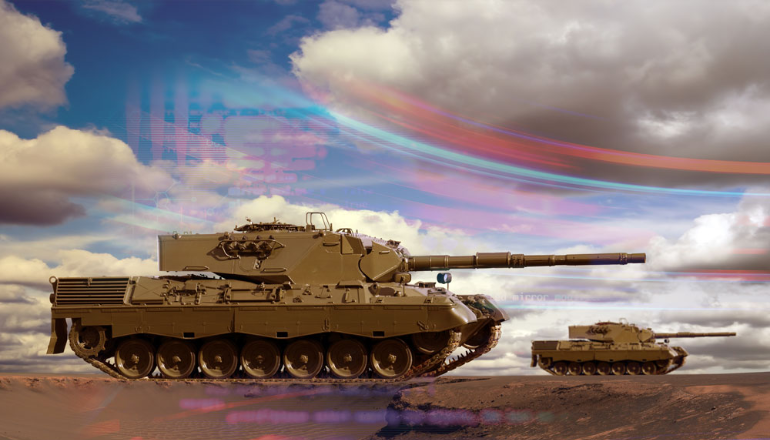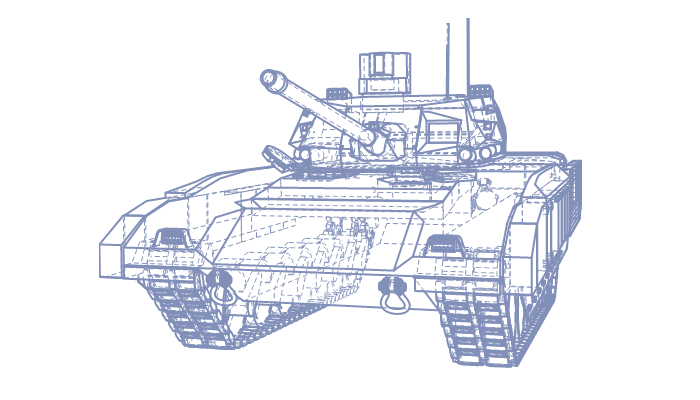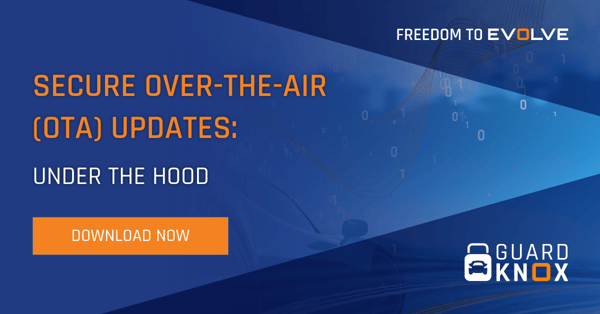Zonal E/E Architecture - Impact on Outfitting and Operational Maintenance of Military Vehicles
January 7, 2021
A military vehicle must be proactively maintained to keep it in mission critical readiness and prevent unnecessary downtime. The military cannot afford to have idle or poorly maintained assets, as they often work in a dangerous theater away from experts that can diagnose and repair them.
Worse still would be for a fleet of vehicles at risk of a cyber attack to be unprotected and on a mission. To ensure that a military ground vehicle is continuously monitored and maintained, the increasing complexity and computational demands of the automotive electronic/electrical (E/E) systems must be addressed.
E/E Architecture is undergoing a major technological evolution in the civilian automotive industry to meet the expectations of a new generation of drivers. These technological changes in E/E Architectures and the respective high-performance and consolidated computing components are ideal for military ground vehicles. They can be optimized to provide a robust, secure, connected and autonomous architecture leading to a game-changing reduction in cost and complexity of outfitting and maintenance.
A Shift in Architecture
Vehicle architectures have reached the limits of viability as more and more Electronic Control Units (ECU), millions of lines of code, and hundreds of specialized suppliers and parts have been added to vehicles. A technological shift is therefore required to:
1. Advance the bus architecture with all its complexity to a high speed packet communications architecture
2. Create processor units that will consolidate multiple functions (that are today served by separate ECUs) into ECUs that are multi functional
3. Update the vehicle software architecture to a Service-Oriented Architecture that can accommodate the needed flexibility, security and agility for the software-defined aspects of the vehicle
4. Arrange these ECUs in a better topology enabled by IP to reduce the needed cabling length, weight, complexity and cost to a fraction of what it currently is.
Zonal E/E Architecture addresses this technological shift, addressing the increasing complexity and computational demands of the automotive electronic/electrical (E/E) system. The armed forces expect constant internet connectivity, a fully customizable driving or riding experience based on terrain or function and be comfortable in the knowledge that their systems are safe and secure and can be monitored or modified securely in real-time and over-the-air.

Secure Automotive SOA Software
With an Automotive Service-Orientated Architecture (SOA) a real-time safe and secure environment for the operation of multiple services is created. This architecture is able to:
- Precisely allocate computing resources as needed;
- Guarantee a predetermined level of service and performance for each application;
- Reduce cyber risks by separating critical clients/networks from non-safety / non-critical clients/networks;
- Integrate generic service Application Program Interfaces (API) over legacy interfaces if required; and
- Easily remedy cyber risks, add or modify services via over-the-air (OTA) software updates.
By virtualization, each partition can host applications that are bound by resource allocation and access permissions and therefore cannot modify the underlying Operating System (OS) or configuration parameters. This prevents unauthorized access to other areas within the vehicle network and greatly limits the potential for putting the vehicle at risk.
A Service-Orientated Architecture utilizing access controls will ensure that individual services receive only predefined sub-services and can be enhanced by hardware modules (such as Security / Trust / Cryptography) to accelerate core functionality and security capabilities without making any changes to the services themselves.
Military vehicles equipped with Zonal E/E
Military vehicles are based on standard “basic” designs which are adapted to suit their specific requirements and uses. A good example of this is the continual improvement in the M1 Abrams with more than four Special Enhancement Packages for the US alone, with other variants for sale to other countries, evolving the E/E systems and complexity over time.
With the same basic vehicle design, it is important to minimize the number of electronic HW components so that outfitting and retrofitting vehicles is significantly simpler. Fewer components means fewer malfunctions, less development, maintenance, spare parts and training requirements as well as simplified logistics when deploying vehicles. Perhaps most importantly, having fewer components in the E/E means there is capacity to have fully redundant systems that ensure the vehicle’s critical systems can failover in the event of a failure.
With a Service-Orientated Architecture and the virtualization of machines in the vehicle there will be a lowering of the number of dedicated control modules (ECUs) and other computing and communications related hardware. By reducing this HW, we can maximize the operational readiness, undertake field diagnostics quickly, carry fewer spare parts and thus minimize downtime of the vehicle.
Maintenance of Military Vehicles
When a military vehicle malfunctions, be it from the impacts of the operational conditions, a cyber attack or general wear and tear, it must return to service quickly and usually without the benefit of large teams of subject matter experts to make the necessary fixes.
A combination of Zonal E/E Architecture with its virtualized Service-Orientated Architecture simplifies the diagnosis and replacement of failed components or software. With the use of over-the-air (OTA) connectivity, diagnostics and software updates can be undertaken by experts at remote locations.

GuardKnox Zonal E/E Architecture Will Keep Assets Active
Two of the biggest challenges with keeping military assets operational and in the field is:
- Being able to diagnose problems quickly and repair faults in the field; and
- Counter cyber threats as soon as they are identified.
When Zonal E/E Architecture is implemented, military vehicles will provide a robust and secure in-vehicle architecture with high speed connectivity and minimal multi-functional components. With in-field or over-the-air (OTA) diagnostic tools utilizing IP, components may be easily replaced and reloaded with the correct operational code. If a cyber threat is detected, at risk components can be reloaded with hardened protection.
In short, with a robust architecture, implementing a Service-Oriented approach to vehicle management and control, vehicle utilization will be significantly increased and maintenance costs significantly reduced.






